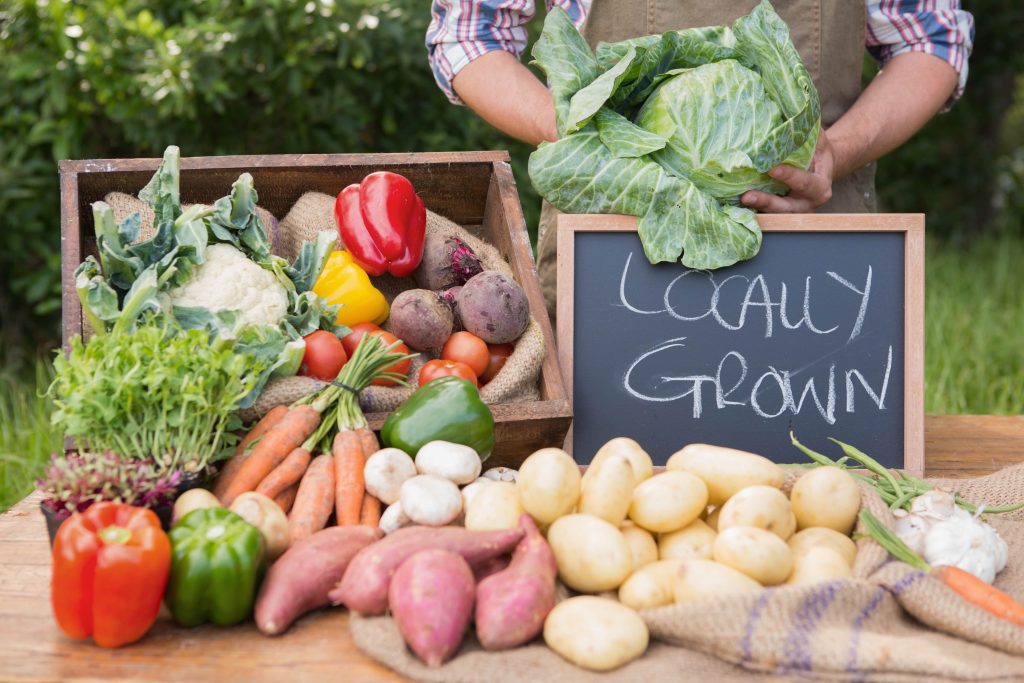15th July 2021
Three Safe & Secure Overarching Trends in 2021
Introduction
When evaluating what strategies should be implemented while the major global economies are recovering, one should look at behaviors exhibited by consumers in response to economic hardship and avoidance of the risk of covid.
Locality
The need for food products to contain ‘real’ and ‘authentic’ ingredients has become increasingly poignant with consumers looking to minimize exposure to health problems; I.e., diabetes, heart disease. The covid outbreak has alerted people of the benefits of good health. 62% of global consumers are concerned about buying products that sound chemical. Consumers are also wary of short-term health risks posed by foods emanating from regions with lax food hygiene standards during production, instead preferring local and home-grown products. (43% of consumers globally, say they want more safety assurance).

Foreign items seem unattractive due to handling while in transport, especially in countries with high press coverage of covid outbreaks (as of February 2021, globally 58% of respondents claimed to be more attentive to items with locality claims and 55% claimed to be more alert to the product’s country of origin). Local products are synonymous with being healthier, safer, tastier, higher quality, (48% of global respondents will pay more if the product is free of synthetics or chemicals) more trustworthy, and moral treatment of livestock. Brand history is a key factor of transparency and trust that leads to inelasticity of sales due to a story that can be bought into. (46% will pay more if the product is from a trusted brand and 60% plan on sourcing food and drink more locally after the covid pandemic).
Due to economic uncertainty, consumers gravitate towards foods associated with their own country. Small, local brands benefit from the types of products being produced is more natural and clean, sustainable production techniques (47% globally say they are more attentive to sustainable-looking products and 56% say that they will pay more with all-natural ingredients). Brands should seek to make consumers aware of shorter supply chains to appeal to covid worried consumers.
Connections are being made by consumers with their favorite brands due to marketing initiatives that demonstrate the brand’s societal awareness. This has been utilized using political campaigns such as; Ben and Jerry’s Justice campaign, or environmental campaigns; such as CanO Water that replace bottles with recyclable aluminum. Consumers seem to click with emotional appeal as they can buy the product to join the cause figure headed by the brand, therefore, creating trust. In 2019, globally, 50% of food consumers say that they are more trusting of brands, and 49% in the drinks sector. This holds the benefit of raising revenue inelasticity allowing companies to more effectively weather the recessionary storm created by the pandemic. Producers can use campaigns to appeal to particular demographics and ages, for example, increased brand approval amongst millennials with campaigns for gender and racial equality by Ben and Jerry’s. There is a similar correlation with nostalgia-based products. The same argument of the emotional connection applies as a loyal consumer base can be relied on to make the sale of the product inelastic.
The Economy
Consumers, during times of economic peril, have become value-oriented meaning the pull from brand names is not enough to achieve consistent sales figures. Food price inflation has occurred in parallel with rising general living costs, consumers don’t see an end to this due to it seeming linked to the economy. Consumers have made cuts to what they bring out of the shop, saving in some areas and spending more on others. consequentially, a strong brand appeal is especially important to be on the list of essentials. As a result of the pandemic, although consumers are cutting in certain areas, impulse purchasing has increased due to pressures of the pandemic, for example; more time at home.
This poses the question, how far into the future does this factor go when lockdowns are rare and the depression of isolation are eased; When the economy recovers to the extent where consumers are comfortable enough to recalibrate to their pre-pandemic shopping habits? This may be restricted to countries with successful vaccine roll-outs in judging consumer habits in the recovering economy. In recovering economies, consumers should theoretically be more receptive to superior goods. “Global food prices have jumped at their fastest monthly rate in over a decade, according to the United Nations. … According to the index, food prices in May were 4.8% higher than April – the biggest monthly rise since October 2010 – and 39.7% higher than this time last year (May 2020).”1 According to the BBC on the 4th of June, food price inflation potentially negates benefits seen from the recovering economy, consumers have less disposable income to spend on impulse purchasing non-essential foods. Is this going to be a problem further into the future?
“The increased costs are a result of renewed demand in some countries and a backlog of low production. Market and supply disruptions due to restrictions on movement have created local shortages and higher prices. Experts had warned that high demand and low production would lead to rising inflation as economies exit lockdown.”1 Although production issues resulting from the pandemic have caused food price inflation, it might not self-correct to pre-pandemic levels.

With rising average disposable income among consumers as the unemployment rate falls, trends independent of covid mean that strong branding will remain absolutely crucial for brands when consumers keep leaving their supermarket with less non-essential goods. (As of Feb 2021, in South America, 71% of consumers have claimed they have reduced spending on food and drink in the last month, this encompasses the critical outbreak of covid from January up to the present. In North America and Europe, as of Feb 2021, 71% and 68% of consumers have attempted to reduce spending on food and drink). These statistics affirm the analysis that consumers have been reducing consumption due to covid pressures and then pressures onset by food price inflation are those low consumption figures from recovering.
Packaging
Product Packaging – there has been a large shift in consumer awareness on packaging sustainability and covid safety. (As of Feb 2021, 67% of consumers globally claim to have changed their attitude towards packaging with the likely implication this is linked to the environment, 55% of consumers globally are more alert to packaging safety because of covid). Consumers, due to the onset of covid, are aware of the need for packaging that protects food and drink products from contamination.
The rise in awareness of the impact of single-use and thermosetting plastics is far more culturally ingrained thus post-covid the priority of packaging safety is viable now but will likely not be in the future and should return to pre-pandemic levels. In 2020, Globally, 81% of consumers have been concerned about covid safety on the surfaces of fruit demonstrating that cutting levels of packaging for the sake of the image of sustainability isn’t a viable option until covid is at the back of the minds of consumers.
Overall, demand for sustainable packaging is vitally important for the future, however for short-term appeasement of consumer covid woes, producers should aim to present products as safe by having sufficient levels of packaging. For the producers that are able to, the showcasing of a brand’s history and production techniques will be especially important while consumers prefer transparent brands, to what extent this will remain a valuable factor in the future as trends change with the recovering economy can be questioned.
Conclusion
Exacerbated by the pandemic and probably will remain rising in importance, is the branding to appeal to health. Awoken by the pandemic mainly in generations suspectable to covid related illnesses, and with the general correlation of popularity amongst young people, branding surrounding health has become especially viable now and will remain so into the future.
Branding that targets certain demographics and strengthens relationships with the consumer base is a good long-term investment as future recessions can be weathered, a good lesson that can be taken from the covid recession. The most important factor to determine habits into the future will be the decrease in average disposable income because consumers may need to adjust to recessionary habits as the pandemic causing decreases in average disposable income might continue to a smaller extent with food price inflation.
Written by: Adam J
References:
- BBC News, 2021 https://www.bbc.co.uk/news/business-57353624